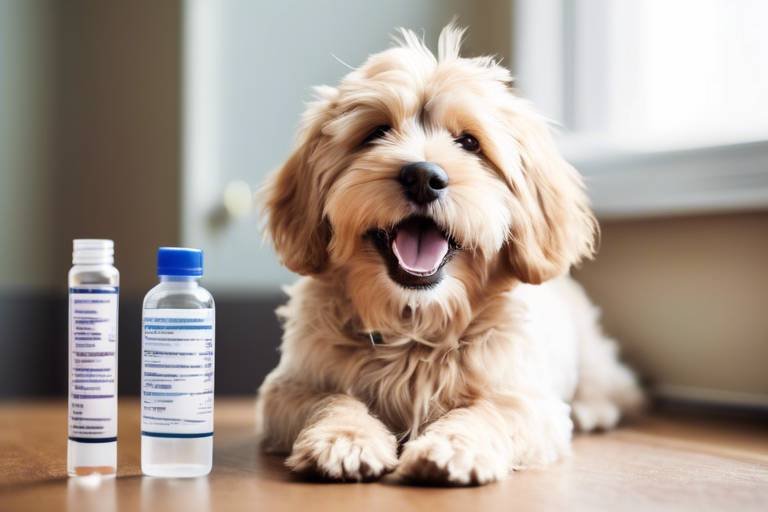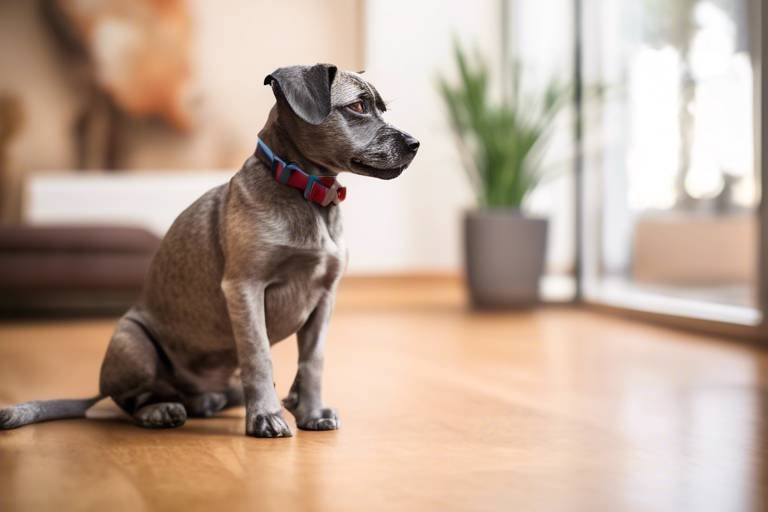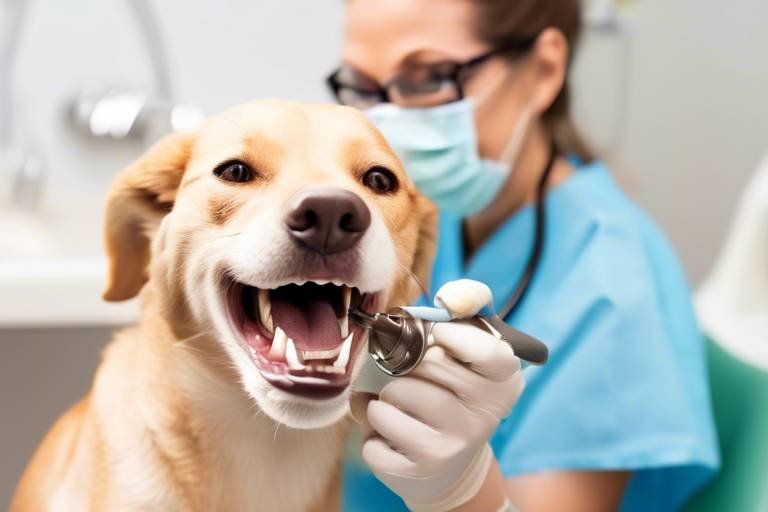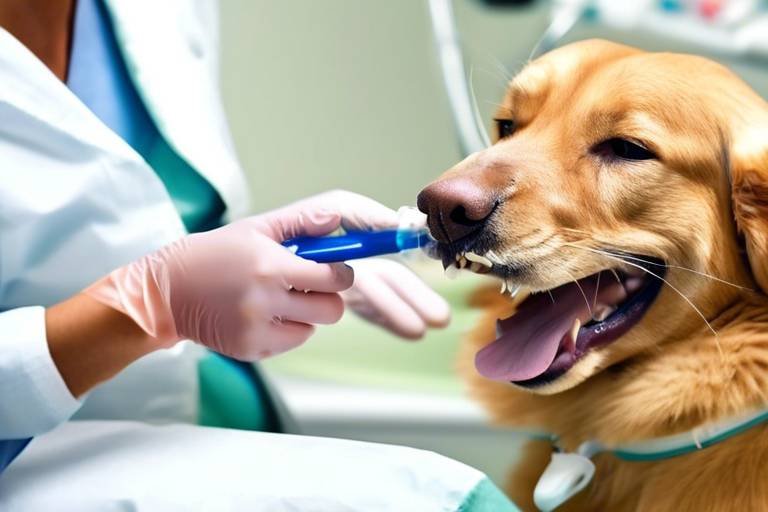How to Create a Safe and Healthy Home for Your Pets
Creating a safe and healthy home for your pets is not just a responsibility; it's a labor of love. Your furry companions depend on you for their well-being, and providing them with a nurturing environment can significantly impact their happiness and longevity. From ensuring they have a secure space to roam, to offering a balanced diet, every little detail matters. In this article, we will explore essential strategies that can help you craft a sanctuary for your pets. Whether you’re a new pet owner or a seasoned one, these tips will help you enhance your pet's quality of life.
Every pet is unique, with individual needs that must be met for their health and happiness. Understanding these requirements is crucial for creating a supportive home environment tailored to your furry companions. Just like humans, pets have emotional, physical, and social needs that should be addressed. For instance, dogs need regular exercise and social interaction, while cats often require mental stimulation and safe spaces to explore. By recognizing what your pet requires, you can foster an atmosphere that promotes their overall well-being.
Designating safe spaces in your home is essential for helping pets feel secure. These areas should be free from hazards and provide comfort, allowing pets to retreat when they need alone time or rest. Think of it as creating a little haven where your pet can unwind after a long day of play. Safe spaces can be a cozy corner with their favorite blanket or a quiet room where they can escape the hustle and bustle of daily life.
The location of your pet's safe space is vital. It should be quiet, away from high-traffic areas, and equipped with their favorite bedding or toys to promote relaxation and security. Imagine your pet curling up in a snug nook, away from the chaos of family activities. This peaceful retreat can significantly reduce their stress levels and provide a sense of stability.
A cozy environment can be achieved with soft bedding, familiar scents, and gentle lighting. This ambiance helps pets feel more at ease, reducing stress and anxiety in the home. Consider adding a few personal touches, such as their favorite toys or a piece of your clothing that carries your scent. These elements can create a comforting atmosphere that makes your pet feel loved and secure.
Privacy is essential for pets to feel secure. Using barriers or creating secluded areas can give pets the space they need to relax without feeling exposed to disturbances. Think about setting up a small pet tent or using a baby gate to create a designated area where they can retreat. This little sanctuary can help them recharge and feel safe, especially in a busy household.
Regularly monitoring your home for potential hazards is crucial. Identifying and addressing safety concerns can prevent accidents and ensure a secure living space for your pets. Look around your home for items that might pose a risk, such as electrical cords, toxic plants, or small objects that could be swallowed. A little proactive approach can go a long way in keeping your furry friends safe and sound.
Proper nutrition is fundamental for your pet's health. Understanding dietary requirements and providing balanced meals can significantly enhance their well-being and longevity. Just like humans, pets thrive on a nutritious diet that supports their energy levels, immune system, and overall health. It’s essential to do your research and consult with your veterinarian to ensure you’re meeting your pet’s specific dietary needs.
Selecting high-quality pet food is vital for ensuring your pet receives the right nutrients. Researching ingredients and consulting with veterinarians can help in making informed choices. Look for brands that prioritize natural ingredients and avoid fillers or artificial additives. A good rule of thumb is to choose pet food that lists meat as the first ingredient, ensuring your pet gets the protein they need to thrive.
Creating consistent feeding routines fosters a sense of security in pets. Regular meal times can improve digestion and help manage weight, contributing to overall health. Consider feeding your pet at the same times each day, and use a measuring cup to ensure they’re getting the right portion sizes. This routine not only benefits their physical health but also strengthens the bond between you and your pet.
- What are some common pet hazards in the home? - Common hazards include toxic plants, electrical cords, and small objects that can be swallowed.
- How can I tell if my pet is stressed? - Signs of stress in pets can include excessive barking, hiding, or changes in eating habits.
- What should I look for in pet food? - Look for high-quality ingredients, with meat as the first ingredient, and avoid artificial additives.

Understanding Pet Needs
Every pet is unique, much like a fingerprint, and understanding their specific needs is crucial for fostering a happy and healthy environment. Just like humans, pets have their own personalities, preferences, and requirements that must be met for them to thrive. Whether you have a playful puppy, a curious kitten, or a wise old cat, recognizing these needs is the first step in creating a supportive home. For instance, dogs often need regular exercise and social interaction, while cats may seek out quiet corners for napping. By tuning into these requirements, you can tailor your living space to better suit your furry friends.
Moreover, pets require more than just food and shelter. They need mental stimulation, social interaction, and a safe space to explore. Think of it this way: just as we need a balanced diet, exercise, and emotional support, pets thrive on a similar foundation. Providing a variety of toys, engaging activities, and opportunities for socialization can significantly enhance their quality of life. For example, interactive toys can keep a pet entertained, while regular playtime can strengthen your bond and provide essential exercise.
Understanding your pet's needs also involves recognizing their health requirements. Regular veterinary check-ups, vaccinations, and preventive care are fundamental to ensuring your pet lives a long, healthy life. Just like we schedule our annual physicals, our pets deserve the same level of attention to their health. It’s essential to stay informed about common health issues related to your pet’s breed and age, as well as to maintain a close eye on any behavioral changes that might indicate discomfort or illness.
To summarize, meeting your pet's needs is a multifaceted approach that includes:
- Physical Needs: Regular exercise, a balanced diet, and a safe living environment.
- Mental Needs: Engaging toys, social interaction, and stimulating activities.
- Health Needs: Routine veterinary care and attention to behavioral changes.
By prioritizing these aspects, you create a nurturing environment that not only keeps your pets safe but also promotes their overall well-being. It's about creating a space where they can flourish, feel loved, and express their unique personalities. So, take the time to observe and understand your pets; after all, they rely on you to provide the best possible life!
Q: How can I tell if my pet is happy?
A: Signs of a happy pet include a wagging tail, playful behavior, and a relaxed body posture. Additionally, they may seek out your company and show interest in their surroundings.
Q: What should I do if my pet seems anxious?
A: If your pet shows signs of anxiety, consider creating a safe space for them, providing calming toys, and ensuring they have a consistent routine. Consult with a veterinarian if anxiety persists.
Q: How often should I take my pet to the vet?
A: Regular veterinary check-ups are recommended at least once a year, but older pets or those with health issues may need more frequent visits.

Safe Spaces for Pets
Creating safe spaces for your pets is essential in ensuring their comfort and security within your home. These designated areas serve as a refuge where your furry friends can retreat when they feel overwhelmed or simply need some alone time. Think of it as their personal sanctuary, a cozy nook where they can unwind and recharge. In a world that can often feel chaotic, having a safe space helps your pets feel grounded and secure.
When designing these safe spaces, it’s crucial to consider the environment around them. A safe space should be free from any potential hazards, such as sharp objects, toxic plants, or anything that could cause harm. Imagine your pet’s safe space as a bubble of tranquility, where they can escape from the hustle and bustle of daily life. This area should be equipped with their favorite bedding or toys, creating an inviting atmosphere that encourages relaxation.
The location of your pet's safe space plays a significant role in its effectiveness. Ideally, it should be situated in a quiet area of your home, away from high-traffic zones where noise and activity can be overwhelming. Think about a corner in your living room, a cozy nook in a bedroom, or even a quiet spot in a hallway. This strategic placement allows your pet to retreat without feeling isolated from the family.
To create a truly cozy environment, consider incorporating elements that appeal to your pet's senses. Soft bedding, familiar scents, and gentle lighting can transform a simple corner into a haven of comfort. For instance, using a blanket that smells like you can provide reassurance and warmth. A dimly lit area can also help in reducing anxiety, making it a perfect spot for your pet to relax after a long day of play.
Privacy is another critical factor in making your pet feel secure. Just like us, pets need their own space to decompress. Consider using barriers like pet gates or creating secluded areas with furniture to give your pet the privacy they crave. This setup can be especially beneficial in multi-pet households, where having a quiet zone can help reduce stress and potential conflicts.
In summary, creating safe spaces for your pets is not just about physical safety; it's about fostering a sense of well-being and comfort. By thoughtfully designing these areas, you can help your pets feel secure and loved in their home environment.
- Why are safe spaces important for pets? Safe spaces provide pets with a sense of security and comfort, allowing them to retreat when they feel stressed or overwhelmed.
- What should I include in my pet's safe space? Include soft bedding, familiar toys, and items that carry your scent to make the space inviting and comforting.
- How can I ensure my pet's safe space is free from hazards? Regularly inspect the area for any potential dangers, such as sharp objects or toxic plants, and remove them immediately.
- Can I create a safe space for multiple pets? Yes! Just ensure that each pet has their own designated area where they can feel secure and comfortable.
Choosing the Right Location
When it comes to creating a safe and cozy space for your pets, the location is everything. Imagine trying to relax in a noisy café with people bustling around you; it’s hard, right? Pets feel the same way when their safe spaces are in high-traffic areas of the home. You want to choose a spot that is not only quiet but also comfortable. Look for corners of your home that are away from the hustle and bustle of daily activities—places where your furry friend can unwind without interruptions.
Consider placing their safe space in a room that has a door, allowing you to close it off from the commotion of family gatherings or the sounds of the television. A cozy nook in a bedroom or a corner of the living room can work wonders. Make sure this area is equipped with their favorite bedding, toys, and perhaps even a blanket that carries their scent. This little touch can make a world of difference, as familiar scents can evoke feelings of safety and comfort in pets.
Additionally, think about the temperature of the location. Pets are sensitive to heat and cold, so a space that is too hot or too drafty can be uncomfortable and even harmful. Ideally, you want to find a spot that maintains a comfortable temperature throughout the day. If you have a sunny spot that your pet loves, consider providing a shaded area or a cooling mat to help them stay comfortable.
Another key factor is the accessibility of the location. If your pet has mobility issues, make sure their safe space is easy to access. You wouldn’t want them to struggle to reach their cozy corner, right? Ensure that they can get to their safe space without any obstacles in their way. This not only helps them feel secure but also promotes their independence.
Lastly, think about the privacy aspect. Pets, much like humans, need their own space to retreat to when they feel overwhelmed. Using barriers like pet gates or even furniture can create a sense of enclosure that makes them feel more secure. Remember, the goal is to create an environment where they can feel protected and relaxed—a true sanctuary in your home.
- What should I include in my pet's safe space?
Include soft bedding, their favorite toys, and familiar scents to make it cozy and inviting.
- How can I ensure my pet's safe space is quiet?
Choose a location away from high-traffic areas and consider using soundproofing elements like rugs or curtains.
- Is it necessary to have a designated safe space for my pet?
Yes, having a safe space helps reduce stress and anxiety, providing a retreat for your pet when they need it.
Creating a Cozy Environment
Creating a cozy environment for your pets is more than just a nice touch; it’s a necessity for their overall well-being. Think of it as crafting a little haven where your furry friends can unwind after a long day of play or simply take a break from the hustle and bustle of the household. Imagine coming home after a busy day and having a warm, inviting space waiting for you. That’s exactly what you want for your pets!
To achieve this cozy atmosphere, start with the basics: soft bedding. A plush bed or a comfortable blanket can make all the difference. Consider their size and sleeping habits; some pets love to curl up, while others prefer to stretch out. Providing a bed that meets their preferences ensures they feel snug and secure.
Next, think about familiar scents. Pets are highly sensitive to smells, and a familiar scent can have a calming effect. You might want to place an old piece of your clothing or a favorite toy in their space to provide comfort. This simple touch can be like a warm hug, reminding them they are safe and loved.
Lighting is another key factor in creating a cozy environment. Soft, gentle lighting can help reduce anxiety and stress in pets. If you can, opt for natural light during the day, and use warm-toned lamps in the evening. Harsh fluorescent lights can be unsettling, so aim for a soothing ambiance that promotes relaxation.
Lastly, consider the layout of their cozy corner. It should be a secluded spot where they can observe their surroundings without feeling exposed. Using barriers like pet gates or even furniture can create a sense of privacy. This is especially important for pets that may feel anxious in busy environments or around loud noises. By providing them with a cozy, private space, you’re giving them the gift of tranquility.
In summary, creating a cozy environment for your pets involves:
- Choosing soft, comfortable bedding.
- Incorporating familiar scents to promote comfort.
- Utilizing gentle lighting to reduce stress.
- Designing a layout that offers privacy and security.
By focusing on these elements, you’ll be well on your way to ensuring your pets feel right at home, relaxed, and loved. Remember, a cozy environment is not just about aesthetics; it’s about nurturing their emotional and physical health.
Q: How can I tell if my pet feels comfortable in their space?
A: Signs of comfort include relaxed body language, such as lying down with their belly exposed or choosing to spend time in their designated area. If they frequently return to their cozy spot, that’s a great indicator!
Q: What should I avoid when creating a cozy environment?
A: Avoid placing their resting area in high-traffic zones or near loud appliances. Also, steer clear of using strong fragrances that might overwhelm their sensitive noses.
Q: Can I use my pet’s favorite toys to enhance their cozy space?
A: Absolutely! Including their favorite toys can add comfort and familiarity, making their space even more inviting.
Providing Privacy
Just like us, pets need their own personal space to unwind and recharge. Imagine coming home after a long day, only to be surrounded by noise and chaos. It can be overwhelming, right? Well, your furry friends feel the same way! Providing them with a private sanctuary where they can escape from the hustle and bustle of daily life is essential for their mental well-being. This space should be a haven, allowing them to feel safe and secure.
To create this cozy retreat, consider using barriers like pet gates or furniture to designate a specific area in your home. This could be a corner of a room or even a cozy nook under the stairs. It’s crucial that this space is away from high-traffic areas, as constant foot traffic can lead to stress and anxiety for your pets. Think of it as their own little fortress—one where they can retreat whenever they need to take a break.
Moreover, ensuring that this area is equipped with soft bedding, their favorite toys, and perhaps a piece of your clothing can help create a familiar and comforting environment. Familiar scents can be incredibly soothing for pets, making them feel more at home in their designated space. It’s like wrapping them in a warm blanket of love and security.
Additionally, consider using soft lighting or a nightlight in the area to create a calming ambiance. Bright lights can be harsh and unsettling for pets, especially during the evening hours. A gentle glow can mimic the natural light they are accustomed to, promoting relaxation and tranquility. Remember, privacy is not just about physical space; it’s about creating an atmosphere where your pets feel they can let their guard down.
In summary, providing privacy for your pets is a simple yet effective way to enhance their comfort and reduce stress. By creating a safe haven equipped with familiar items, soft lighting, and a quiet atmosphere, you can help your furry companions feel secure and content in their home. After all, a happy pet leads to a happy home!
- Why is privacy important for pets? Privacy allows pets to feel secure and reduces stress, helping them to recharge and relax.
- What are some ways to create a private space for my pet? You can use pet gates, furniture, and soft bedding to designate a quiet area away from high-traffic zones.
- How can I make my pet's private space more comfortable? Adding familiar scents, toys, and gentle lighting can create a cozy and inviting atmosphere.
- Do all pets need a private space? While most pets benefit from having a private area, the need for privacy can vary based on the individual pet's personality and preferences.
Monitoring Pet Safety
Keeping your furry friends safe and sound is a top priority for any pet owner. Just like we pet parents childproof our homes for little ones, we need to think about how our living spaces affect our pets. Regularly monitoring your home for potential hazards is not just a good idea; it's essential for preventing accidents and ensuring a secure living space for your pets. Imagine your home as a fortress, where every corner is checked and fortified against dangers that could harm your beloved companions.
Start by taking a good look around your home. Are there any small objects lying around that could become choking hazards? Things like coins, batteries, or even small toys can be dangerous if your pet decides to investigate them. It's a bit like having a toddler in the house—if you wouldn’t want them to get into something, your pet probably shouldn’t either. Additionally, make sure to keep all cleaning supplies, medications, and other toxic substances out of reach. A simple cabinet lock can be a lifesaver here!
Another area to keep an eye on is your yard. If you have a garden, be sure to check that any plants you have are non-toxic to pets. Some common household plants, like lilies and azaleas, can be harmful. If you're unsure about a particular plant, you can easily find lists online that detail which plants are safe and which to avoid. It's like being a gardener and a pet detective at the same time!
When it comes to pet safety, don't forget about the technology in your home. With the rise of smart home devices, it’s crucial to ensure that any cords or wires are safely tucked away. Pets can easily chew through these, which could lead to serious injuries. Consider investing in cord protectors or organizing your cables to keep them out of reach. Just think of it as setting up a mini obstacle course that keeps your pets engaged while also protecting them!
Lastly, consider implementing a pet monitoring system. There are numerous cameras and devices available that can help you keep an eye on your pets when you’re not home. This way, you can check in on them and ensure they’re safe and sound. Plus, it’s a great way to catch those adorable moments when they think no one is watching!
- What are common household items that are toxic to pets?
Common items include chocolate, grapes, onions, and certain houseplants. Always check before introducing new items into your home. - How can I pet-proof my home?
Start by removing small objects from the floor, securing cords, and storing harmful substances out of reach. - What should I do if my pet ingests something harmful?
Contact your veterinarian or a pet poison hotline immediately for guidance.

Nutrition and Diet
Proper nutrition is fundamental for your pet's health. Just like humans, pets require a balanced diet to thrive and live a happy life. Understanding dietary requirements and providing balanced meals can significantly enhance their well-being and longevity. Imagine your pet as a finely tuned machine; without the right fuel, it simply won't function optimally. So, what does that mean for you as a pet owner? It means being proactive about your furry friend's dietary needs!
When it comes to choosing quality pet food, the options can be overwhelming. With so many brands and varieties available, how do you know which one is best? Start by looking for food that lists high-quality protein sources, such as chicken, beef, or fish, as the first ingredient. Avoid foods with vague terms like "meat by-products" or "animal fat." These can be red flags indicating lower quality. Additionally, consider the specific needs of your pet. For instance, puppies require different nutrients than adult dogs, and senior pets may need diets tailored to their age.
Consulting with a veterinarian can also provide valuable insights. They can help you understand your pet's unique dietary requirements based on their age, breed, size, and health conditions. Remember, just as you would consult a doctor for your own health, your pet deserves the same level of care. You may also want to consider the benefits of homemade diets or specialized foods for pets with allergies or sensitivities. However, ensure that any homemade meals are nutritionally balanced—this is where a vet's guidance becomes invaluable.
Once you've selected high-quality food, the next step is establishing feeding routines. Creating consistent feeding routines fosters a sense of security in pets. Regular meal times can improve digestion and help manage weight, contributing to overall health. For instance, feeding your pet at the same time each day helps regulate their internal clock, making them more comfortable and less anxious. Just think about how you feel when you have a routine—your pets thrive on it too!
Here’s a quick breakdown of some essential dietary components to consider:
| Component | Importance |
|---|---|
| Proteins | Essential for growth, maintenance, and energy. |
| Fats | Provide energy and support cell function. |
| Carbohydrates | Source of energy; helps with digestion. |
| Vitamins and Minerals | Support various bodily functions and overall health. |
It's also essential to monitor your pet's weight and adjust their diet as needed. Obesity in pets can lead to serious health issues, just like in humans. If your pet seems to be gaining weight, it might be time to reassess their food portions or switch to a lower-calorie option. On the flip side, if your pet is losing weight unexpectedly, a vet visit is crucial to rule out any underlying health problems.
In summary, providing a balanced diet is not just about feeding your pet; it’s about nurturing their health and happiness. By understanding their nutritional needs, choosing quality food, and establishing feeding routines, you can ensure that your furry friend lives a long, healthy, and vibrant life. After all, a well-fed pet is a happy pet!
- What type of food should I feed my pet? Look for high-quality pet food that lists real meat as the first ingredient and is appropriate for your pet's life stage.
- How often should I feed my pet? Most pets thrive on two meals a day, but this can vary based on individual needs. Consult your vet for personalized advice.
- Can I give my pet table scraps? Some human foods are safe for pets, but many can be harmful. Always check with a vet before introducing new foods.
Choosing Quality Pet Food
This article explores essential strategies for ensuring a safe and healthy environment for your pets, focusing on various aspects from nutrition to safety measures and mental well-being.
Every pet has unique needs that must be met for their health and happiness. Understanding these requirements is crucial for creating a supportive home environment tailored to your furry companions.
Designating safe spaces in your home helps pets feel secure. These areas should be free from hazards and provide comfort, allowing pets to retreat when they need alone time or rest.
The location of your pet's safe space is vital. It should be quiet, away from high-traffic areas, and equipped with their favorite bedding or toys to promote relaxation and security.
A cozy environment can be achieved with soft bedding, familiar scents, and gentle lighting. This ambiance helps pets feel more at ease, reducing stress and anxiety in the home.
Privacy is essential for pets to feel secure. Using barriers or creating secluded areas can give pets the space they need to relax without feeling exposed to disturbances.
Regularly monitoring your home for potential hazards is crucial. Identifying and addressing safety concerns can prevent accidents and ensure a secure living space for your pets.
Proper nutrition is fundamental for your pet's health. Understanding dietary requirements and providing balanced meals can significantly enhance their well-being and longevity.
When it comes to your pet's diet, is not just a good idea; it’s essential. Just like us, pets thrive on a well-balanced diet that meets their specific nutritional needs. But how do you know what makes a pet food brand stand out from the rest? First, start by examining the ingredient list. Look for whole meats, vegetables, and grains that you can recognize. If the ingredient list reads like a chemistry experiment, it’s best to steer clear.
Next, consult with your veterinarian. They can provide insights tailored to your pet’s age, breed, and health requirements. For example, some pets may need higher protein content, while others might require grain-free options. It's a bit like finding the right pair of shoes; what works for one might not work for another.
Moreover, consider the following factors when selecting pet food:
- Life Stage: Puppies and kittens require different nutrients than adult pets.
- Special Needs: Pets with allergies or health issues may need specialized diets.
- Brand Reputation: Research brands that prioritize quality and safety in their production processes.
Another important aspect is the feeding guidelines. Always follow the recommended serving sizes based on your pet’s weight and activity level. Overfeeding can lead to obesity, which is a common issue among pets. Think of it as a balancing act; you want to provide enough food to keep your furry friend satisfied without tipping the scales into unhealthy territory.
Lastly, don’t forget to keep an eye on your pet's reaction to the food. A shiny coat, healthy skin, and consistent energy levels are good signs that you’ve made a wise choice. If you notice any adverse effects, such as digestive issues or a lack of energy, it might be time to reassess your selection.
Q: How can I tell if the pet food is of high quality?
A: Look for recognizable ingredients, a clear nutritional breakdown, and a reputable brand. Consulting your veterinarian can also provide valuable insights.
Q: Should I switch my pet's food gradually?
A: Yes, it’s best to transition to a new food gradually over a week to avoid digestive upset.
Q: Are there any specific ingredients I should avoid?
A: Yes, avoid foods with excessive fillers, artificial preservatives, and by-products. Always read the labels carefully.
Establishing Feeding Routines
Creating consistent feeding routines for your pets is like setting a rhythm to the music of their lives. Just as we thrive on structure, our furry friends find comfort in knowing when their next meal is coming. Establishing a routine not only helps in managing your pet's weight but also plays a significant role in their overall health and happiness. Think about it: when you wake up every morning and know exactly what to expect, it makes the day feel more manageable, right? Well, the same goes for your pets!
To start, try to feed your pets at the same times each day. This consistency can help regulate their digestive system and prevent unwanted behaviors like begging or scavenging for food. For example, if you decide to feed your dog at 8 AM and 6 PM, stick to that schedule as closely as possible. This predictability creates a sense of security and helps them understand when they can expect their next meal.
But that's not all! The type of food you provide is equally important. Make sure to choose high-quality pet food that meets their specific dietary needs. This is crucial because different pets have different nutritional requirements based on their age, size, and health conditions. If you're unsure about what to feed, consulting with a veterinarian can provide you with tailored advice. They can help you navigate the myriad of options available, ensuring your pet receives the best possible nutrition.
Additionally, consider the portion sizes. Overfeeding can lead to obesity, which is a growing concern among pets today. On the flip side, underfeeding can lead to malnutrition. A simple way to determine the right portion is to refer to the feeding guidelines provided on the pet food packaging. However, these are just starting points, and you should adjust based on your pet's individual needs.
Here's a quick table to help you visualize a sample feeding schedule for different types of pets:
| Pet Type | Feeding Times | Recommended Portion Size |
|---|---|---|
| Dog (Medium-sized) | 8 AM, 6 PM | 1.5 - 2 cups |
| Cat | 7 AM, 5 PM | 1 cup |
| Small Dog | 8 AM, 5 PM | 0.5 - 1 cup |
| Large Dog | 7 AM, 6 PM | 3 - 4 cups |
Lastly, don't forget to monitor your pet's weight and adjust their feeding routine as necessary. Just like us, pets can have fluctuating energy levels and dietary needs. Regular check-ups with your vet can help you stay informed about your pet's health and ensure that their feeding routine remains optimal.
In conclusion, establishing feeding routines is not just about meal times; it's about creating a structured and loving environment that promotes your pet's health and happiness. So, embrace the rhythm, keep those schedules, and watch your furry companions thrive!
- How often should I feed my pet? - Generally, adult dogs are fed twice a day, while cats can be fed once or twice daily. Puppies and kittens require more frequent meals.
- What if my pet doesn’t finish their food? - It's important to monitor their eating habits. If they consistently leave food, consult your vet to determine if adjustments are needed.
- Can I change my pet's food abruptly? - It's recommended to transition to new food gradually over a week to avoid digestive upset.
- Should I give my pet treats? How often? - Treats can be given, but they should not exceed 10% of your pet's daily caloric intake.
Frequently Asked Questions
- What are the essential needs of my pet?
Every pet has unique needs that include proper nutrition, safe spaces, mental stimulation, and regular veterinary care. Understanding these needs helps create a supportive environment that promotes their overall health and happiness.
- How can I create a safe space for my pet at home?
Designate a quiet area in your home that is away from high-traffic zones. Equip this space with soft bedding, their favorite toys, and familiar scents. This cozy environment will help your pet feel secure and relaxed.
- Why is monitoring my home for hazards important?
Regularly checking your home for potential hazards is crucial to prevent accidents. Identifying dangers like toxic plants, small objects that can be swallowed, or exposed wires ensures a safe living space for your furry friends.
- What should I consider when choosing pet food?
Selecting high-quality pet food is essential for your pet's health. Look for brands that list real meat as the first ingredient, avoid artificial additives, and consult with your veterinarian to tailor a diet that meets your pet's specific needs.
- How can I establish a feeding routine for my pet?
Creating consistent feeding times helps your pet feel secure and can improve digestion. Aim to feed your pet at the same times each day and monitor their portions to maintain a healthy weight.
- What are some ways to provide mental stimulation for my pet?
Mental stimulation can be provided through interactive toys, puzzle feeders, and regular playtime. Engaging your pet's mind not only prevents boredom but also enhances their overall well-being.
- How can I tell if my pet is stressed or anxious?
Signs of stress in pets can include excessive barking, destructive behavior, hiding, or changes in eating habits. If you notice these signs, consider providing a safe space, more exercise, or consulting a veterinarian for additional support.



















